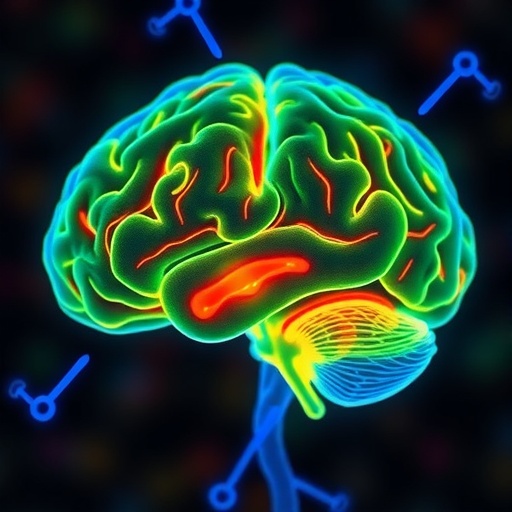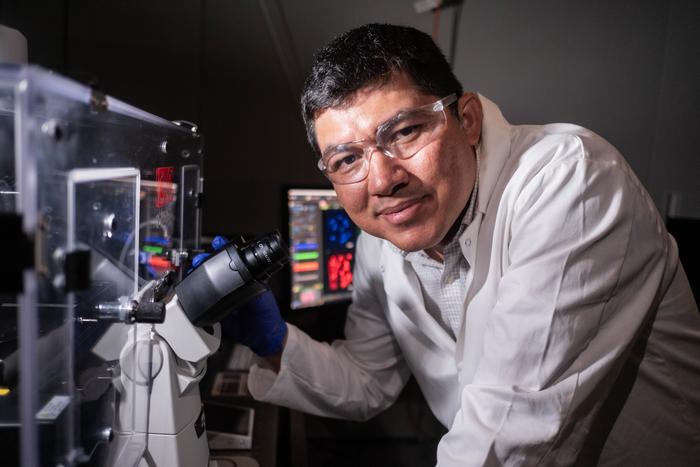A groundbreaking study published in Nature Metabolism sheds new light on the intricate metabolic reprogramming of microglia within the post-stroke brain environment, uncovering a pivotal role of cholesterol metabolism in sustaining chronic neuroinflammation and impeding neurorestorative processes. This discovery marks a substantial leap forward in our understanding of cerebral ischemia’s long-term effects and opens promising horizons for therapeutic interventions targeting lipid metabolic pathways to enhance stroke recovery.
Stroke remains a leading cause of disability worldwide, with survivors often battling prolonged neurological deficits stemming from unresolved inflammation and impaired neural repair. Central to this process are microglia, the resident immune cells of the central nervous system, which orchestrate inflammatory responses. However, their behavior and metabolism following stroke have long posed a mystery. The research led by Zhao, Li, Feng, and colleagues meticulously elucidates how stroke disrupts cholesterol homeostasis within microglia, triggering a metabolic switch that perpetuates neuroinflammation and stalls neural regeneration.
Employing state-of-the-art metabolomic profiling and spatial transcriptomics in stroke models, the team detected significant alterations in cholesterol synthesis and efflux pathways exclusive to microglial populations. These lipid metabolic changes emerged as key drivers of their sustained pro-inflammatory phenotype, characterized by persistent secretion of cytokines and chemokines that intensify neuronal damage. This metabolic shift contrasts starkly with the microglia’s role during the acute phase of stroke, where transient inflammation aids in tissue clearance and repair initiation.
A particularly compelling aspect of the study lies in the delineation of specific enzymes and regulatory factors governing this reprogramming. The researchers identified upregulation of cholesterol biosynthetic enzymes, alongside suppression of cholesterol transporters, effectively leading to intracellular cholesterol accumulation within microglia. This accumulation facilitated activation of inflammatory signaling cascades and impaired microglial capacity to transition into a reparative state. By mapping these molecular events, the work highlights potential metabolic checkpoints amenable to pharmacological modulation.
Functional assays further demonstrated that pharmacological interventions aimed at normalizing cholesterol metabolism in microglia yielded profound effects. Treatments restoring cholesterol balance reduced inflammatory mediator release and promoted phenotypic switching of microglia toward a neuroprotective profile. This metabolic correction translated into enhanced neurogenesis, synaptic plasticity, and functional recovery in animal stroke models, emphasizing the translational potential of targeting cholesterol pathways to mitigate long-term stroke disability.
The implications of cholesterol metabolic reprogramming extend beyond microglial dysfunction, touching upon broader mechanisms of neurorestoration failure. Cholesterol is a vital component of cellular membranes and myelin sheaths, and its dysregulation impacts neuronal and oligodendrocyte functions critical for neural circuit integrity. Consequently, the findings suggest that microglial cholesterol metabolism indirectly modulates these essential neurobiological processes, orchestrating the balance between inflammation and repair.
Moreover, this study challenges the traditional view of microglia solely as immune responders by reframing them as dynamic metabolic entities whose lipid handling capacities dictate their functional plasticity. The notion that metabolic pathways govern immune cell states has gained traction in peripheral immunology, but its extension to brain-resident microglia underscores a sophisticated layer of regulation in central nervous system pathophysiology. This paradigm shift opens avenues for metabolic interventions tailored to finely tune immune responses in neurological diseases.
In the context of clinical translation, the identification of metabolic biomarkers linked to microglial activation states could offer novel diagnostic tools to stratify patients at risk of persistent neuroinflammation and poor recovery post-stroke. Non-invasive imaging techniques or cerebrospinal fluid assays detecting cholesterol metabolism alterations could complement existing prognostic measures, enabling personalized therapeutic strategies.
Importantly, the study also sparks questions regarding the interplay between systemic lipid metabolism and brain immune function. Stroke patients often present with dyslipidemia and metabolic syndrome, which may exacerbate microglial cholesterol dysregulation. Future research might explore how peripheral metabolic disturbances influence central immune metabolism and inflammatory outcomes, potentially integrating lifestyle and pharmacological interventions for holistic stroke management.
Implementing therapies targeting microglial cholesterol metabolism poses challenges, notably ensuring specificity and avoiding systemic side effects. Nevertheless, advances in nanoparticle delivery systems and blood-brain barrier permeability offer promising frameworks to achieve targeted modulation. Long-term studies will be essential to assess the safety and efficacy of such interventions in clinical populations, building upon the robust preclinical data presented by Zhao and colleagues.
Another fascinating dimension concerns the long-term fate of lipid-laden microglia in chronic neuroinflammation. The persistence of metabolically altered microglia may contribute to neurodegenerative cascades observed in stroke survivors, potentially linking cerebrovascular events to later development of dementia and other cognitive disorders. Understanding and interrupting these cholesterol-driven pathways might therefore hold broader relevance for neurodegenerative disease prevention.
This research exemplifies the power of integrating cutting-edge multi-omics approaches with in vivo functional analyses to unravel the complex cell-state alterations occurring in brain diseases. The meticulous dissection of microglial metabolic networks not only clarifies pathogenic mechanisms but also creates a framework to identify novel drug targets and biomarkers, revitalizing the quest for effective neurorestorative therapies.
In summary, the study by Zhao et al. elegantly reveals that cholesterol metabolic reprogramming within microglia is a key culprit driving chronic neuroinflammation and hindering neurological recovery after stroke. By characterizing the molecular underpinnings and functional consequences of this metabolic shift, the research provides compelling evidence that targeting cholesterol metabolism holds transformative potential for improving stroke outcomes. This landmark discovery invites a rethinking of metabolic-immune interactions in the brain, highlighting cholesterol as a master regulator of microglial function and a promising focal point for future stroke therapeutics.
The findings not only enrich our understanding of microglial biology but also underscore a broader principle: metabolic rewiring dictates immune cell identity and function in profound ways. As scientists deepen their exploration of these pathways, we can anticipate a new era of neuroimmunometabolism-focused interventions capable of fostering brain repair and mitigating the devastating sequelae of stroke and other neurological disorders.
Subject of Research: Cholesterol metabolism in microglia and its role in chronic neuroinflammation and neurorestoration failure following stroke.
Article Title: Cholesterol metabolic reprogramming mediates microglia-induced chronic neuroinflammation and hinders neurorestoration following stroke.
Article References:
Zhao, Q., Li, J., Feng, J. et al. Cholesterol metabolic reprogramming mediates microglia-induced chronic neuroinflammation and hinders neurorestoration following stroke. Nat Metab (2025). https://doi.org/10.1038/s42255-025-01379-7
Image Credits: AI Generated
Tags: cholesterol homeostasis disruption in braincholesterol metabolism in microgliachronic neuroinflammation mechanismscytokines and chemokines in neuroinflammationlipid metabolic pathways in brain recoverymetabolomic profiling in neurobiologymicroglial response to cerebral ischemianeurological deficits after strokepost-stroke neuroinflammationrole of microglia in stroke recoveryspatial transcriptomics in stroke researchtherapeutic interventions for stroke recovery






